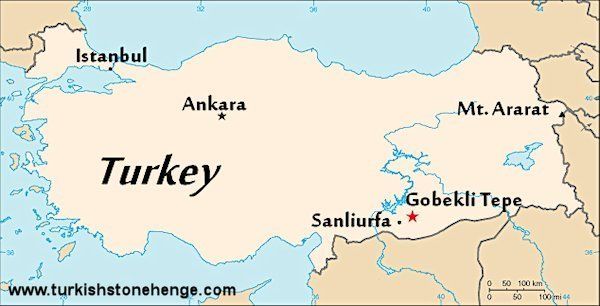
It's an amazing find. It really pushes back human civilization to the end of the last Ice Age and really adds credence to the theories that the Sphinx is much older then the Egyptologists think, and a whole chapter of human history is missing...

Do you think the Turks built an ancient CHRISTIAN site?
Turkey became a country in 1923. Before then, Turkey was part of the Ottoman (muslim) empire.
Armenia was the first country to declare Christianity its national religion.
Mohammed came along centuries after that.
http://www.ephesustravelguide.com/ephesus-in-bible---private-biblical-ephesus-tours.html
Christian Heritage Sites in Ephesus
Private Biblical Ephesus Tours
Ephesus in Bible
Church of Mary
Ephesus in Bible
House of Virgin Mary
Basilica of St. John
Ephesus Museum
Terrace Houses
Sirimce Village
Grotto of 7 sleepers
Ephesus in Bible
We offer private tours of Ephesus with expert tour guides focuses on biblical importance of Ephesus. These private tours visit christian sites in Ephesus like: House of Virgin Mary, Basilica of St. John, Grand Theater of Ephesus, Church of Mary... For more information please do not hesitate to contact us.
Cave of St. Paul
During the excavations at Ephesus, more than 3,500 inscriptions have been found. Some of the most interesting are in a small cave on the slope of Bülbül Mountain (Nightingale Mountain). According to a local legend, when St. John brought the Virgin Mary to Ephesus from Jerusalem, they had no place to stay. John found this cave and hid Mary there for her safety. It was not until some time later that John located a more suitable home for Mary higher up on the mountain, known as Panaya Capoulu. In more recent years, the cave has been re-named “the Cave of St. Paul” due to the frescoes and inscriptions on the walls which refer to St. Paul.
The cave has been a Christian sacred site since the 1st or 2nd century. The walls were decorated with frescoes and inscriptions and white-washed several times, then re-painted with new images. Discovered under plaster on the walls are important 5th-century frescoes, with inscriptions, depicting the Virgin Mary, St. Paul and St. Thecla (a female disciple of Paul). This is the only known depiction of St. Paul at Ephesus and the earliest known appearance in the world of Paul and Thecla together.
The cave was discovered by a group of priests in 1892, while looking for the tomb of the Virgin Mary. Under the layers of plaster on the corridor walls are Greek phrases such as “the hidden of Mother of God” and “Paul help your servant”-written in charcoal and chalk. To protect these delicate and ancient wall frescoes, the cave is not open to the public. Unfortunately this site can not be visited during the private tours of Ephesus.